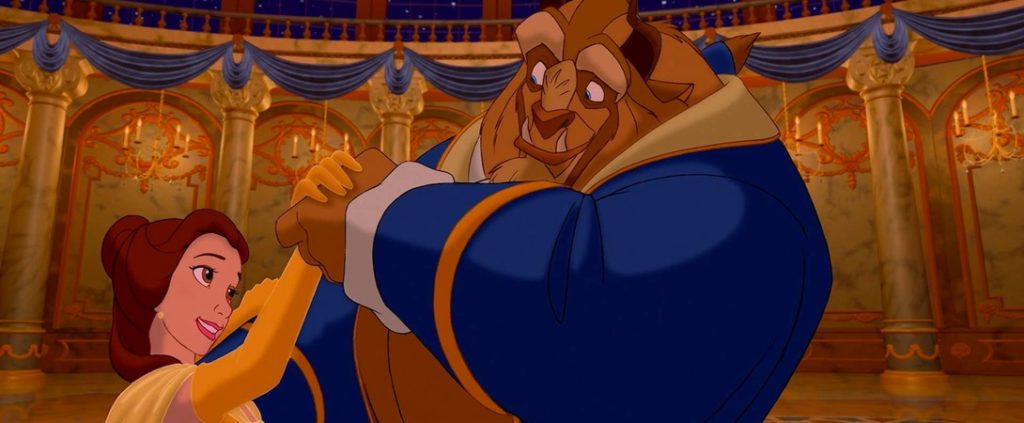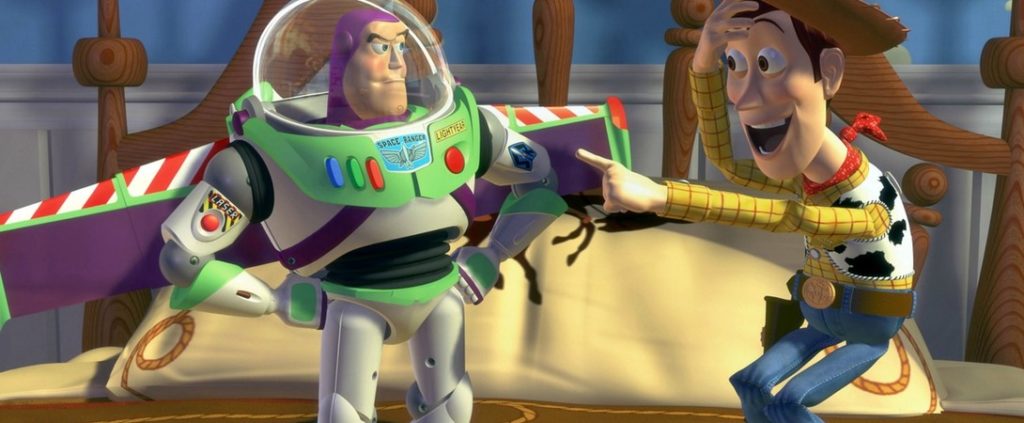When reflecting on the ’90s, it’s impossible to ignore how pivotal the decade was for animated films. So many that are considered classics now — Beauty and the Beast, The Lion King, Princess Mononoke, Toy Story, and The Iron Giant, to name a few — were all released within a few years of each other. The decade broke open barriers placed on animation in regards to what it could achieve and who it could appeal to. Not since Snow White and the Seven Dwarfs in 1937 had there been such groundbreaking advancement made in the world of animated features.
Two of the most significant achievements of the period that did much to set the stage for where we are today are Beauty and the Beast’s Best Picture nomination at the 1992 Oscars — the first-ever for an animated feature — and Toy Story’s success three years later as the first computer-animated feature ever released.
Beauty and the Beast’s nomination represented a new era for animated filmmaking, opening up the opportunity for animated features to be taken more seriously as Best Picture contenders especially. While this is not the only definitive mark that matters, it’s an achievement that nonetheless goes a long way to influence cultural perception. Especially at a time when animated films, possibly even more so than today, were thought of as primarily children’s entertainment.
The year Beauty and the Beast was up for Best Picture (among other Academy Awards), that top category was still down to only five nominees and The Silence of the Lambs won the Oscar. It’s probably safe to say that despite not winning Best Picture that year (it won in original score and original song categories only), Beauty and the Beast made just as large an impact on film culture from a contemporary perspective.
The Disney Renaissance was in its very early stages when Beauty and the Beast released in 1991. Despite having spent the previous decade making non-musicals mostly aimed towards children (including The Fox and the Hound, Oliver & Company, and The Great Mouse Detective) The Little Mermaid arrived in 1989 to wide success and began a new era for the studio. To many critics at the time, Disney simultaneously seemed to be harkening back to films such as Snow White and Cinderella while also feeling very forward-looking as well in regards to style and technique. And when Beauty and the Beast came two years later, it had these elements and more.

Some of the most beautiful and memorable film musical numbers to date revolve around the songs “Belle” (an Oscar nominee), “Be Our Guest” (also an Oscar nominee), and “Beauty and the Beast” (the Oscar winner). They work harmoniously with the film’s story and script differently than past Disney efforts because Beauty and the Beast didn’t rely on animators and story artists to build a narrative. The film had a devoted writer, Linda Woolverton, who worked with songwriter Howard Ashman to craft story and lyrics that brought dimensional characters and narrative to life.
“I hit it off right away with Howard, even though I didn’t come from musical theater,” Woolverton said of their collaboration in an oral history of the film’s making for Entertainment Weekly. “Howard and I wanted to make a sea change in the Disney heroine. Together we conjured up Belle, who loved to read.”
Then there is the groundbreaking use of computer animation in the film’s ballroom scene. The digitally animated location not only provides spatial depth to the scene but also emotional depth, as well. Belle and the Beast are encompassed by a gorgeous ballroom, with a three-dimensional chandelier and pillars, as they move around the dance floor, falling in love for the first time. The virtual camera movement allows us to absorb the scenery fully, swaying around the room along with them.
Bringing the ballroom to life in this way emphasizes the more fantastical elements of the fairy tale in a way that could not have been accomplished as effectively without the movement and dimensions provided by computer animation. While the story and music were lauded by many critics, it was this technical advancement that broke through as a sign that Disney was really investing itself in the future of animation.
Meanwhile, as the production for Beauty and the Beast was going on, Disney was working with the then-independent Pixar Animation Studios on the development of the CAPS (Computer Animation Production System) program, which began around 1986. After John Lasseter‘s computer-animated shorts Luxo Jr. (1986) and Tin Toy (1989) received Academy Award nominations, with the latter receiving the Oscar, Pixar wanted to begin working toward producing a feature-length film.
Despite their going into Toy Story focused on the idea of making the first computer-animated feature, however, the story and script were just as important in the minds of the Pixar team. A tidbit from David Price’s book The Pixar Touch highlights the fact that Lasseter and Pete Docter, both relatively new to the art of screenwriting, attended a three-day seminar in LA given by script guru Robert McKee, and when they returned, “McKee’s teachings became the law of the land at Pixar.”

When Toy Story finally released in 1995, with Disney handling distribution, it was a critical success. Roger Ebert wrote in his review, “Imagine the spectacular animation of the ballroom sequence in Beauty and the Beast at feature-length and you’ll get the idea.” The film also became the highest-grossing movie of that year. Audiences really latched onto not only this computer animation style but this type of original storytelling with such mass appeal. Pixar immediately made its cultural mark and carved its future brand.
Within the success narratives of Beauty and the Beast and Toy Story, there are themes that are prevalent throughout both: an evolving understanding of the art form; an emphasis on creating a fully realized story; and a desire to appeal to large audiences of all ages, making interesting and smart family entertainment.
Both Beauty and the Beast and Toy Story have become so ingrained into our popular culture at this point that it’s easy to forget the strides they made in these areas more than 20 years ago. This is especially because computer animation has become the primary format of animated films today. In addition to Pixar, our line-up now is filled with features from Illumination Entertainment, Sony Animation, DreamWorks Animation, and even Walt Disney Animation’s own computer-animated movies. Each studio has taken on their own style and approach to the format, as well.
Thinking of Toy Story then as the first computer-animated feature makes it feel too ancient in a world where it is still very relevant, especially when a third sequel has just come out 24 years later. Similarly, the 2017 live-action remake of Beauty and the Beast feels much like a retread of the original with nothing new to add to our current culture or the story itself. At the same time, it did breathe life back into the 1991 film by bringing it back to our attention and reminding us why it was so enjoyable the first time. The music especially is still spectacular in a loud theater.
More than the Beauty and the Beast redo or any of Disney’s other live-action reimaginings, this year’s remake of their 1994 animated feature The Lion King most resembles the ambitiousness of Disney and Pixar with the original Beauty and the Beast and first Toy Story in the 1990s. This time, the computer animation on display is meant to completely give the illusion of live-action. So much so that it’s not too far off to think of it as setting the stage for future possibilities through the technology, as Pixar did in 1995.
Beauty and the Beast and Toy Story’s technical achievements may have piqued everyone’s attention at the time, but the prominence placed on their stories is perhaps what makes them more interesting feats now. Maintaining narrative quality in addition to making technological advancement is admirable. Especially considering Pixar today has become one of the most highly regarded studios in terms of how it approaches storytelling. Finding Nemo being nominated for Best Original Screenplay at the 2004 Oscars is perhaps the best summation of how far Pixar had come in a little under a decade in not only its storytelling craft but its focus on original storytelling. Sure, they’ve become more of a sequel machine in recent years, but the original stories they continue to produce are unmatched in this day and age.
Beyond the sequels and remakes of today, though, Beauty and the Beast and Toy Story made possible the wide range of animated entertainments we enjoy today. They ultimately expanded the possibilities of the art form and placed focus on storytelling in ways that are still prominent and will continue to be for future generations.